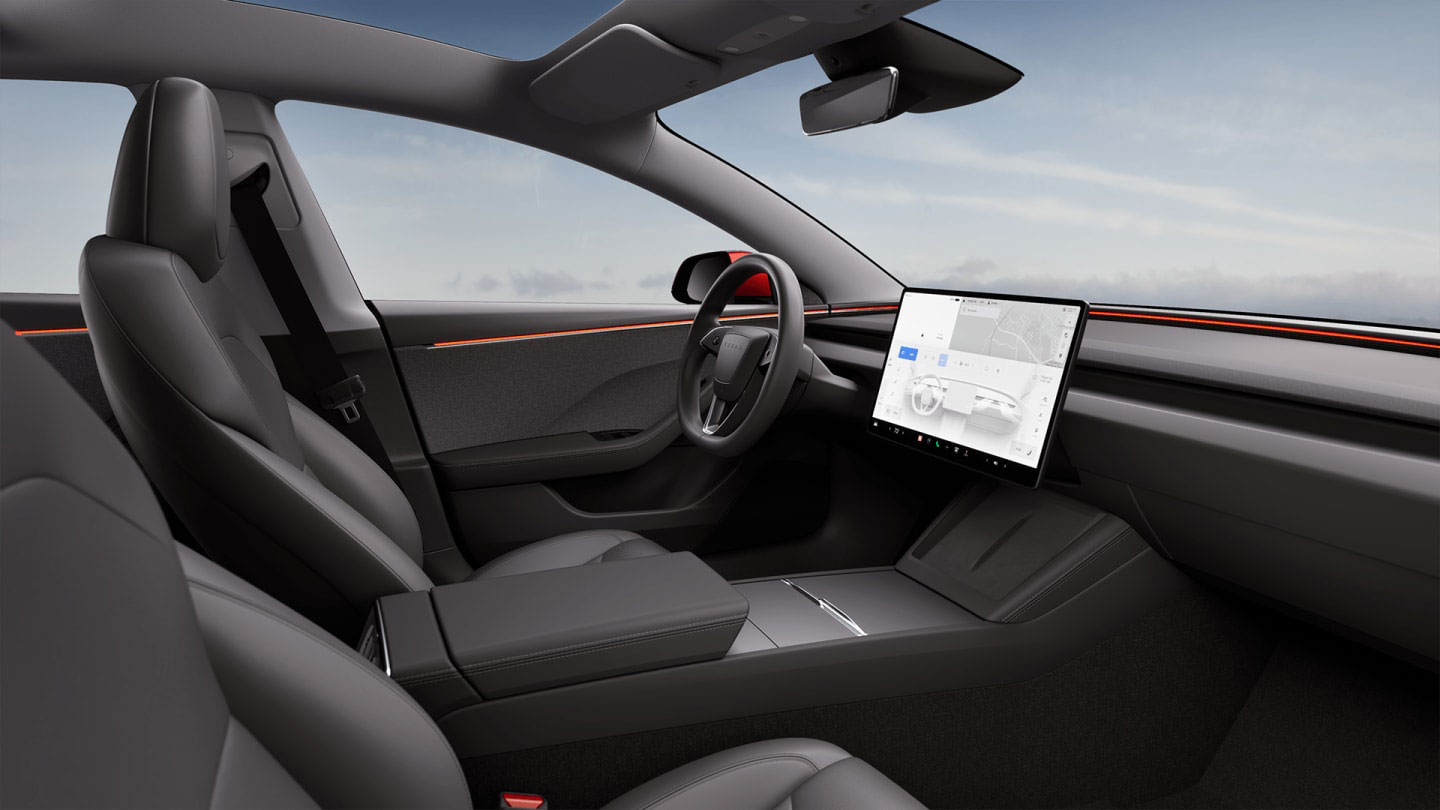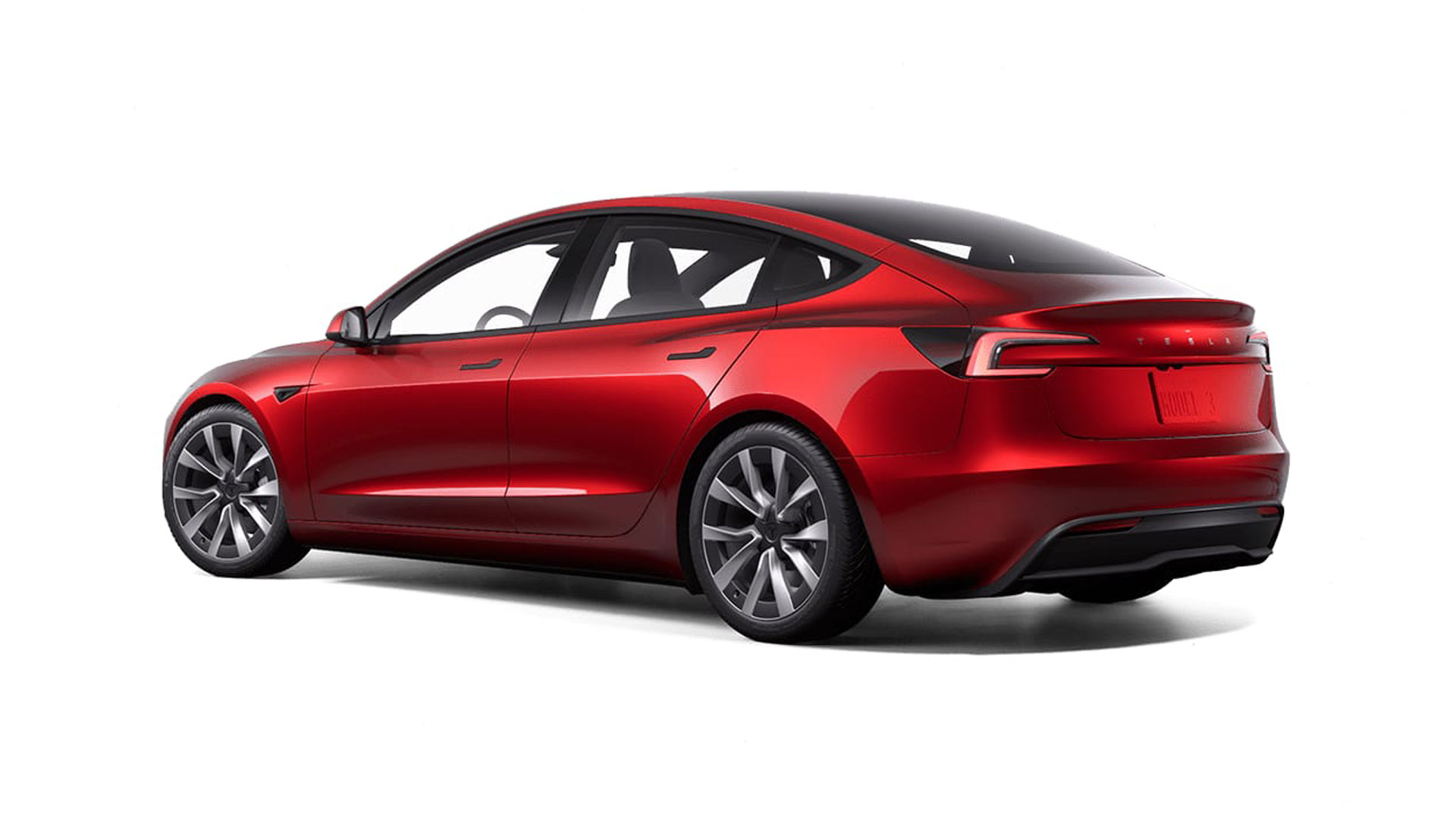Tesla Model 3 refresh: Four reasons to want it and two reasons to drive away
Some to consider

There’s no doubt that Tesla’s Model 3 sedan is the current benchmark when it comes to EVs. I’ve written about this before, and most EV pundits agree. And while the Model Y is more popular – especially here in the US – it’s basically the crossover version of the Model 3 and shares the same platform. Disclaimer: I’ve owned two Model 3s since 2018, but as a tech and car journalist, I’ve also driven most other EVs, so there’s that.
Still, at 6 years old, the Model 3 is no spring chicken. Other than a few minor cosmetic tweaks, it’s pretty much the same car – at least visually – as it was when it launched in 2017. See, unlike other car manufacturers, Tesla doesn’t follow a “model year” update schedule. The company makes changes to its cars when it sees fit. For example, there were two revisions to the Model 3 in 2021 and 2022, and they look virtually the same.
Under the hood, the Model 3 has received numerous improvements since 2017, including a heat pump, an upgraded battery pack, Qi wireless charging, matrix headlights, a power trunk, faster computers, and better cameras – to name a few. It’s also lost some features, something that’s been quite controversial, like the front radar and the ultrasonic parking sensors – and even the lumbar support adjustment on the front passenger seat.
For several months now, leaks and rumors of a significant Model 3 refresh – called Project Highland – have been swirling, culminating with an official reveal by Tesla on September 1. The result is a car that’s been improved in almost every way and includes noticeable visual upgrades inside and out. So, let’s see what changed, and what it means for you.
Here’s why you want it
1) Updated exterior design
The new Model 3 features an updated front fascia with a new bumper and new, thinner, matrix headlights with integrated turn signals and DRLs (daytime running lights). Gone are the separate combination turn signal/fog lights in the corners of the bumper, as well as the much-maligned front bumper bulge – which gives the current Model 3 a bit of a “fish face”. This new front end is definitely the new design’s most obvious change.
At the rear, the refreshed Model 3 gets a new bumper and new, thinner, one-piece, C-shaped tail lights. The diffuser is now taller and incorporates the rear reflectors, like on the Model Y. Since the tail lights are no longer split in half by the trunk lid, but are fully attached to it, they aren’t visible when the trunk is open, so the rear reflectors now also incorporate redundant parking/brake/turn lights – along with the backup lights.
Get daily insight, inspiration and deals in your inbox
Sign up for breaking news, reviews, opinion, top tech deals, and more.
Other differences include re-designed 18-inch Photon and 19-inch Nova wheels, which both include aero inserts for better efficiency. The front fenders and front doors now feature a more pronounced crease aft of the side repeaters (those little turn signal lights usually found on your side-view mirrors), similar to the Model Y. Instead of boasting Tesla’s familiar “T” logo, the trunk lid features the word Tesla spelled out in the company’s signature font, like old Model S and roadster cars.
Finally, there’s a slightly more pronounced lip on the edge of the hood where it meets the windshield – for better aerodynamics. In all, these design changes are welcome, and give the new Model 3 a sleeker, more modern look.

2) Much improved interior
One area where the Model 3 always falls short vs. the competition is the interior – especially when it comes to the quality of the materials and the fit and finish. Tesla is trying to remedy this in the refreshed Model 3 with a new dashboard, steering wheel, center console, and seats. While the new car’s interior maintains the same minimalist vibe as before, it gains a dash of excitement thanks to customizable ambient lighting.
The dashboard has been further simplified (it’s a single piece now) and the open-pore wood section has been replaced with cloth. While the steering wheel is completely new – but lacks stalks (more on this later) – there’s no stupid yoke here. Unlike the steering wheel (or yoke) in the new Model S and X, which have a capacitive button for the horn, the horn in the new Model 3 is activated by pushing the center of the wheel, just like before.
As for the center console, it now features larger Qi wireless charging pads, plus a sliding cover over the cupholders. In addition, every USB Type-C socket now outputs up to 65W of power, so you can charge your MacBook without using a separate 12V adapter. But the most significant update to the center console is in the back. Rear passengers now enjoy their very own 8-inch capacitive touchscreen for climate and entertainment.
The current Model 3 only offers manual rear vents, and the rear seat heaters are controlled via the front (and only) touchscreen. Now rear passengers can control the direction of the rear vents, the fan speed, and the seat heaters with the rear touchscreen, all while watching Netflix or DJ-ing on Spotify. Progress. It’s worth noting though, that the middle rear seat is no longer heated on the refreshed Model 3.
Speaking of which, the front seats are now ventilated, and this feature can be accessed in the Tesla app, just like the rest of the climate settings. Every seat is now made of perforated vegan leather, and the rear seats have more cushioning and are less upright than before, making them more comfortable. The center armrest in the back seat is longer and incorporates the center headrest, which is no longer height adjustable.
Some of the less obvious interior changes include an updated 17-speaker sound system (up from 14) that features a speaker mounted in the structural brace between the two glass roof panels. And on the topic of glass, the new Model 3 now features acoustic glass all around (vs. only the front doors and windshield before). This should further reduce wind and tire noise and is a welcome improvement.
Finally, there are now blind spot warning lights behind speaker grilles in the A-pillar to complement the existing system. Tesla also says it’s upgraded the microphones for better call quality, and improved Wi-Fi and Bluetooth connectivity to routers and phone keys. Also, the trunk is marginally bigger now because it features the same deep storage cubby behind both rear wheel wells (not just on the left side, like in the current car).

3) Better ride quality
The Model 3’s ride has always been on the firm side, and while most drivers enjoy this (myself included), it’s not always comfortable for passengers – especially in the back seat. Basically, the existing suspension tuning can feel harsh when driving over some road imperfections. Tesla apparently fixed this on the refreshed Model 3 with new springs, dampers, and bushings, and by better isolating the front and rear subframes.
So now, you can still have that sporty ride without making your passengers uncomfortable. This – together with the cushier back seats – should make a big difference for folks riding in Model 3 taxis and rideshares. I fully expect this update to carry over to the Model Y refresh – called Project Juniper – since the suspension tuning in Tesla’s popular crossover is even harsher.
4) More range
With Tesla saying it’s changed 50% of the parts in the new Model 3, you’d expect some drivetrain updates, but that’s not the case. The batteries and motors remain the same. Yet the refreshed Model 3 boasts more range. How is that possible? Well, it turns out that the new exterior design isn’t just visually sleeker, it’s literally sleeker – allowing the air to flow more efficiently around the car.
These aerodynamic improvements – a Cd (drag coefficient) of 0.219 (vs. 0.225 before) – result in about 11% more range, at least on paper. Officially, the new Model 3’s range is rated at 344 miles for the standard range RWD (rear wheel drive) model and 421 miles for the long-range AWD (all-wheel drive) version. Now keep in mind these are European WLTP numbers on 18-inch wheels, not US EPA numbers, and the WLTP numbers are always widely optimistic.
Once the new Model 3 comes to the US, I’d expect the EPA range on 18-inch wheels to be about 300 miles for the new RWD model, and approx. 370 miles for the refreshed AWD version (vs. 272 and 333 miles, respectively, for the current Model 3).
Here’s why you want to drive away
1) No more steering wheel stalks
When Tesla introduced the refreshed Model S in 2021, it switched the steering wheel to a yoke and removed the steering wheel stalks (controls that sit behind the steering wheel and that you can reach with your fingers) – relocating the gear selector to the touchscreen, and mounting capacitive buttons on the yoke to activate the indicators, high beams, and windshield spray. Needless to say, this change was extremely controversial, and while some people like the yoke, I’m not a fan.
Clearly, I’m not alone. Earlier this year, Tesla replaced the yoke with a steering wheel, made the yoke optional, and sold the new steering wheel as a retrofit for existing Model S owners. Still, none of this brought the stalks back. Fortunately, the new Model 3 comes with a steering wheel, but sadly it lacks the stalks. On the plus side, Tesla’s apparently improved the haptic feedback on the capacitive buttons, so there’s that.
While this is a bummer, I’m pretty sure it won't be long before stalks become available as third-party accessories, just like buttons and knobs already are.

2) No 360-degree overhead view
The current Model 3 features a total of eight cameras – three behind the windshield in front, one in the rear (backup camera), one in each B-pillar, and one on each fender – which are used for driver assistance and safety features, plus Autopilot/FSD (Full Self Driving) functionality. Despite these many cameras, the Model 3 doesn’t offer a 360-degree overhead view, a feature that’s available on many cars today.
Why is that? Since there’s no front bumper camera on the Model 3, there’s a blind spot in front of the car and no way to generate an accurate, real-time, 360-degree overhead view with the existing cameras. When the new Model 3 was announced, a front bumper camera was visible inside the black grille on Tesla’s official renders, but on later renders and actual cars, this additional camera was gone.
At first glance, this doesn’t seem like a big deal. But it’s a problem. See, last year Tesla decided to save about $115 per car by removing the ultrasonic parking sensors (USS) from the Model 3 and Model Y. The idea was to replace the USS with Tesla Vision – the company’s AI and computer-vision-based tech. In practice, though, Tesla Vision isn’t as accurate as the USS, especially at night or in bad weather.
By adding a front bumper camera to the refreshed Model 3, it was believed that Tesla would remove the blind spot in front of the car, improve the accuracy of Tesla Vision’s distance estimates when parking, and provide a 360-degree overhead view – making for a significantly better parking experience.
A few more things to keep in mind
The new Model 3 isn’t available in the US, Canada, or the UK (yet). Since it’s manufactured at Tesla’s Shanghai factory, it’s initially coming to left-hand drive markets that currently import the Model 3 from China – like Europe. It should land in North America and other markets next year, once the Fremont, CA factory ramps up manufacturing. As for pricing in Europe, the refreshed Model 3 costs about €1000 more than the current car.
Strangely, Tesla hasn’t mentioned anything about a performance variant of the new Model 3. I’m guessing that this version will be revealed when the new car launches in the US. Overall, the refreshed Model 3 delivers major improvements. It takes an already stellar EV and makes it even better. As such, it should help Tesla maintain its lead and keep the competition on its toes. I can't wait to take it for a spin.

Myriam Joire (tnkgrl) was born wearing combat boots and holding a keyboard. Moments later she picked up a soldering iron. On weekends, she rally-raced with her father. She's been stomping, typing, hacking, and driving ever since. After spending years being a code-monkey in the video game industry, she joined Engadget as Senior Mobile Editor and later Pebble as Chief Evangelist. Today she hosts the weekly Mobile Tech Podcast, makes videos on YouTube, writes about tech and cars for TechRadar and other major publications, and advises startups on product/media strategy. She's based in San Francisco.